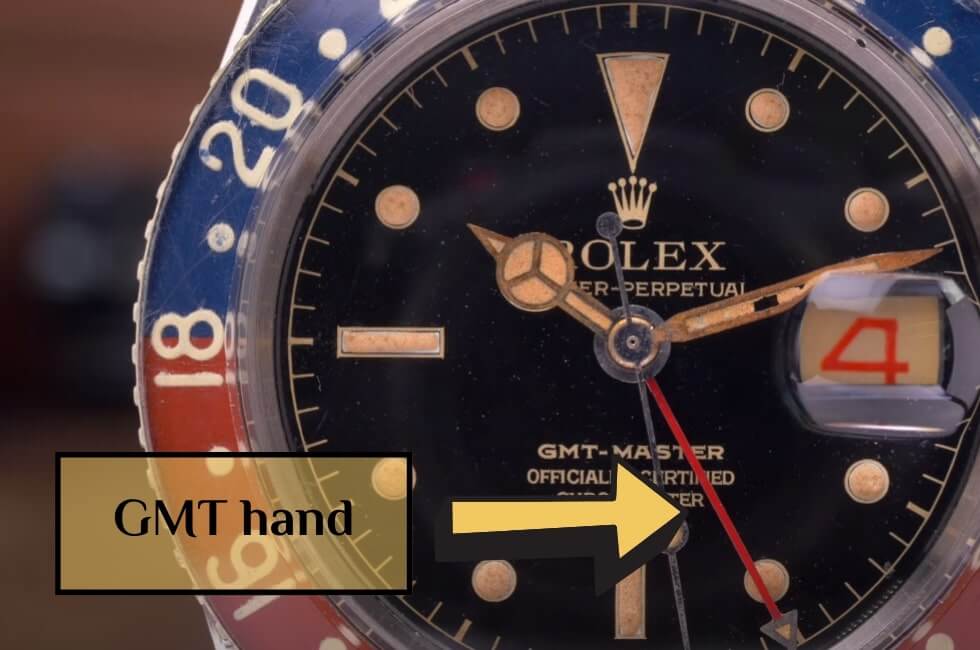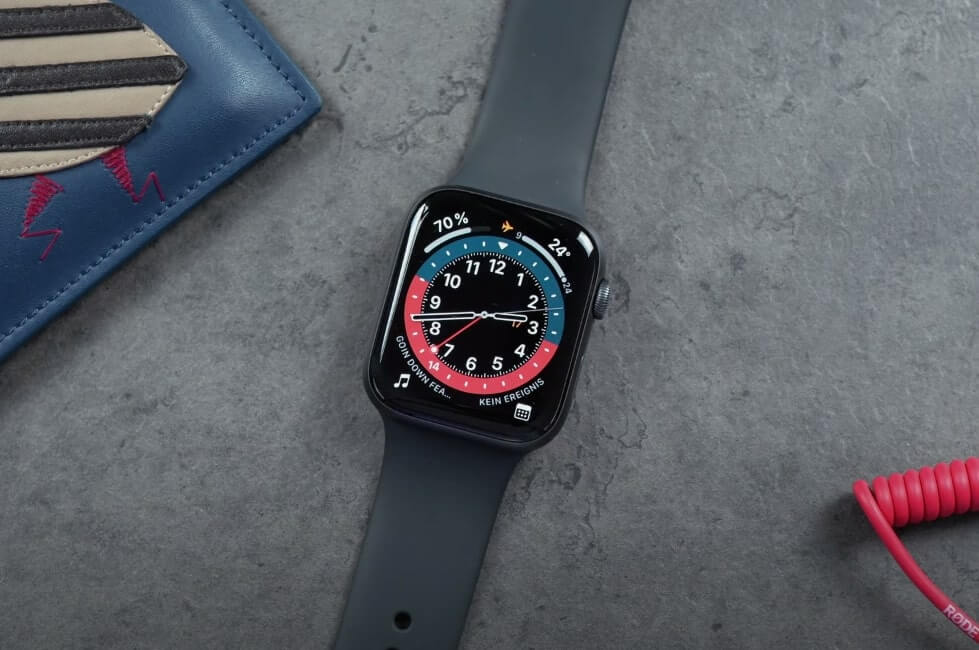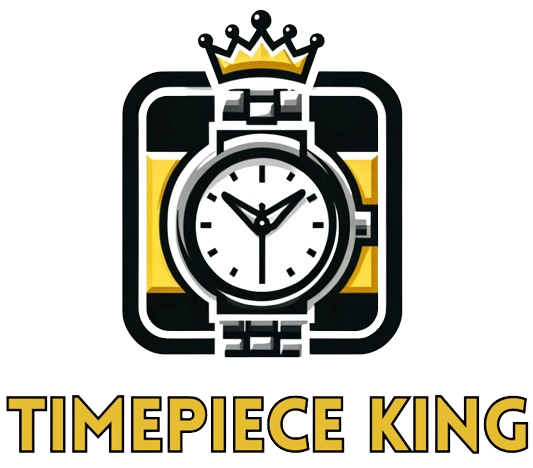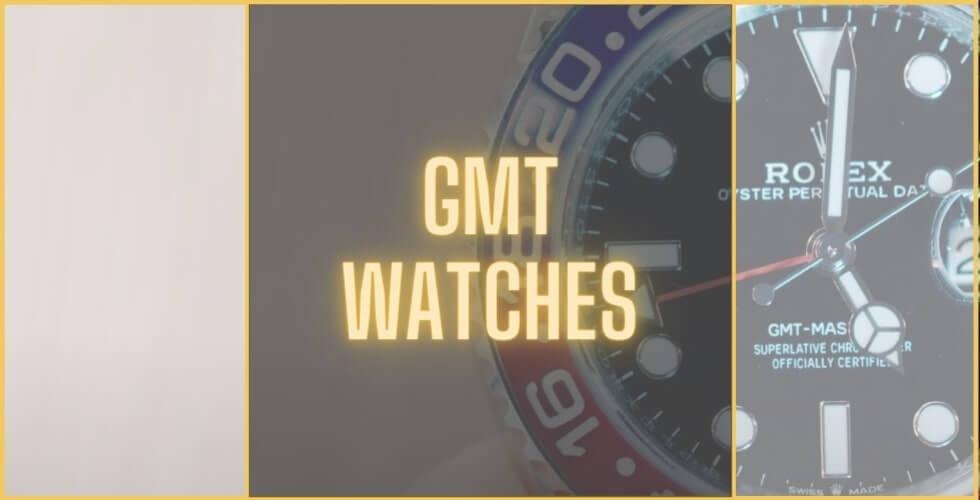Even though most of the newly-released smart wearables put regular wristwatches to shame in terms of the never-ending list of features, the majority of people (me included) still prefer the feel of a good, “old-fashioned” timepiece. And thank God.
As much as a smartwatch is a fun tool to have, it will never replace the excellent craftsmanship, prestige and style that comes with wearing a proper “standard” watch.
If you’ve been considering getting a timepiece that offers something more than a standard two or three-hand configuration, you might have come across the term “GMT watch“.
A much-loved type in many communities that include anything from business people to pilots to backpackers, GMT timepieces have again been gaining in popularity over the last few years. I say “again” because they’re not a new thing – in fact, they’ve been around for centuries.
So, what are GMT watches? And why their distinct feature is so appreciated to this day?
Without further ado, let’s begin solving the mystery.
Timepieceking is reader-supported and might earn a commission (at no additional cost for you) for purchases made via links in this article.
What Does GMT Stand for in Watches?
Before we go into detail about the mechanisms of these watches, let’s first disclose what’s behind the abbreviation.
“GMT” stands for Greenwich Mean Time. Compared to the UTC (Coordinate Universal Time), it’s a pretty archaic term (like many others in the watchmaking industry). The fact is, both have a similar purpose.
Before the introduction of the GMT, governments and scientific bodies had been scratching their heads while attempting to unite around a base global time. GMT, then, became the so-called “zero hour” of the existing time-measuring system.
By using GMT as the benchmark, we could tell time anywhere in the world by adding or subtracting hours from it. For example, if we move east from England, the place from which the term originates, we will be adding 1 hour to each next time zone. If we move west, we will be taking away 1 hour.
The exact location used for measuring the time is the scientifically-prominent Royal Observatory set in a park in London called Greenwhich. Hence, it’s Greenwich Mean Time.
GMT was officially adopted as the international time standard during the International Meridian Conference in 1884. During the conference, as many as 24 time zones were established around GMT.
Because of the massive progress in technology, and especially the greater accuracy offered by atomic watches, GMT has been largely replaced by the aforementioned UTC. Nevertheless, the prime meridian established through Greenwich for GMT is still pretty much the core of UTC, meaning it’s as reliable a timescale as it was decades ago.
What Is a GMT Watch Exactly?
The easiest way to describe a GMT watch would be a timepiece with a second-time zone although, as you will learn further down the article, these watches can track as many as 3 time zones at once – if set up the right way.
Even though GMT watches have been around for eternity, they’re still a subject of many misconceptions.
For example, many newbies or wannabe experts wrongly categorize as GMT watches those that come with a 24-hour watch face or have both 12-hour and 24-hour functionalities. Whereas the presence of a 24-hour bezel is mandatory, it doesn’t alone guarantee GMT capabilities. A watch that shows military time doesn’t have to be a GMT watch either.
So, what is a true GMT watch?
What distinguishes a proper GMT model from one that looks like it but is not, is the extra hand. Most analog watches come with 2 or 3-hand complications that track hours, minutes, and seconds. GMT watches use a fourth hand that works independently from the other three, and it rotates once around the face every 24-hour period.

On top of the fourth hand, the second must-have part of a GMT watch is the rotating bezel. A bezel is a top ring on the watch that surrounds the glass. In fact, most watches have some sort of a bezel but the one present in GMT watches is quite specific as it has to rotate in both ways. A bidirectional bezel allows you to set it to different time zones.

Summing up, a GMT watch is a timepiece that allows you to track two (or three) time zones at once with the help of a 4-hand configuration and a bezel rotating in both directions.
Now let’s learn how to read a GMT watch correctly.
How to Read a GMT Watch?
I hope that by now the meaning of the extra hand and the rotational bezel is clear. If that’s the case, we can move on to actually explaining how to use a GMT watch. Before we do, you need to know that it requires basic math skills. It’s not for everyone…
Just kidding. It’s actually a piece of cake.
As already mentioned, the GMT feature helps you track time in a different time zone(s). It requires you to either add or subtract the number of hours from your current local time.
Since the whole GMT concept originates from London, let’s take the capital of England as a well-deserved example.
How to use GMT watch to track two different time zones?
Let’s say you’ve been living in New York your whole life but you’re currently on a business trip in London. And, being the local patriot that you are, you want to keep track of time in your hometown.
Since London-based Greenwich represents the so-called zero hour, you already know that in order to be up to date with time in a different time zone, you have to add or subtract hours depending on how many time zones the second location is away from London and whether we’re moving east or west.
In the case of New York, we’re moving west. And the city is four time zones away from London. That means it’s 4 hours behind the UK’s capital and that’s exactly the number of hours you have to subtract.
So, how to set a GMT watch the right way?
Let’s say you’re currently having lunch in London and it’s 1 p.m. To adjust the watch so it also shows the correct time in New York, do the following (in the same order):
- Rotate the bezel in a way so that the fourth hand shows the exact same time as the hour hand. Since a GMT bezel has a 24-hour scale and it’s 1 p.m. in London, that means the red hand needs to be pointing to 13.
- Rotate as many bezel “clicks” as is needed. In the case of New York, it’s 4. Here it’s worth pointing out that turning the bezel clockwise subtracts the hours whereas counter-clockwise movement does the opposite.
- Enjoying staying up to date with two time zones!
How to use a GMT watch to track three different time zones?
Now, this isn’t discussed much but GMT watches can in fact track as many as 3 separate time zones. It takes just one extra step.
You’re still in London, and still eager to be up to date with local time in New York. But… your partner stays in San Francisco and you would also like to know about the time over there. In order to set your watch the right way, follow these steps:
- Set the fourth hand to GMT time and the hour hand to the local time.
- In this case, the GMT hand (New York time) needs to be pointing to 9 (on the bezel) whereas the hour hand (London time) to 1 (on the watch face).
- To additionally track time in San Francisco, rotate the bezel by 7 clicks clockwise. That’s because San Francisco is 7 time zones (and hours) away from London.
- Voila!
How to use a GMT watch as a compass?
Last but not least, a GMT watch can also function as a compass.
This feature only works if the hour hand and the GMT hand are both pointing to the local time (in our case, it’s 1 p.m) and you’re in the Northern Hemisphere. If so, do the following:
- Lay the watch flat
- Point the hour hand towards the sun
- The GMT hand now points toward North
- Your GMT watch is now also a compass!
Note: for all three uses discussed, you might have to account for a 1-hour difference in the case of Daylight Savings Time.
What Is the Best GMT Watch?
There are many world-renowned brands that specialize in GMT watches.
To this date, probably the most popular GMT timepiece is the Rolex GMT-Master watch, released in the mid-1950s. Rolex designed the watch for the pilots of Pan Am airlines so they could track both the local and destination times at once.
Its new and upgraded version, GMT Master II, was launched in 2005. Both watches are easily one of the most iconic GMT models released ever.
- 40mm oystersteel case
- Bidirectional, ceramic-made Pepsi bezel
- Jubilee bracelet with Folding Oysterlock safety c lasp
- Scratch-resistant sapphire crystal glass
- Water-resistant up to 100m
- Red GMT hand
- Date window at 3 oclock
Unfortunately, the sad truth is not many folks can afford a legit Rolex timepiece. GMT Master series is likely to set you back at least $15,000, depending on where you do your shopping.
On a positive note, many other brands offer much more affordable GMT watches, and some of them take a lot of inspiration from the iconic GMT Master design.
- You might like: Top 7 GMT Watches Under $1,000
One of the watchmakers known for a rich collection of GMT timepieces is Seiko.
On top of the GMT function, the Japanese watch mogul also offers its in-house Kinetic movement. Seiko GMT watches start from as low as $300. Below you can see one of the most popular GMT models from Seiko, SUN065. On top of allowing you to track a different time zone, it’s also a pretty capable diving watch.
You can learn more about the brand by reading the Seiko watches review.
- 47mm stainless steel case
- Resin band with a buckle clasp closure
- Sapphire crystal glass
- GMT hand
- Seikos Kinetic movement
- Water-resistant up to 200m
Another excellent alternative to Rolex coming from Japan is Citizen. Similar to Seiko, the Tokyo-based watchmaker is known for being rich in affordable diving models that can also function as GMT watches.
All Citizen watches with the GMT function use the brand’s proprietary Eco-Drive movement, meaning they’re powered by the sun. Cheapest GMT watches start from as low as $250. Below find a favorite of mine, Citizen BJ7128-59E.
Learn more about these watches by reading the Citizen brand review.
- 46mm stainless steel case
- Bidirectional bezel
- GMT hand
- Anti-reflective sapphire crystal
- Stainless steel bracelet with fold- over clasp
- Shock-resistant
- Water-resistant up to 200m
- Date window at 3 oclock
If you’re shopping on a budget, not all is lost. There are some quality watchmakers that offer GMT watches even below $100.
One of the best of the low-budget bunch is Invicta. Akin to Seiko and Citizen, the American brand equips some of its diving watches with the fourth hand responsible for the GMT function.
Some Invicta GMT models, like the one you see below, can be snatched for as little as $80.
Get familiar with the American brand by reading my Invicta watch review.
- 48mm stainless steel case
- Stainless steel/silicone band with buckle clasp
- Mineral crystal dial
- Bidirectional bezel
- GMT hand
- Water-resistant up to 100m
- Date window at 3 oclock
What Is the GMT Watch Face in My Smartwatch?
There’s a gold saying that goes “the measure of your success depends on how many copy you”. It looks like smartwatches have finally got the message.

If you’re an Apple Watch owner that’s been testing all watch faces and stumbled across one with an additional watch hand, you’re probably not alone.
The brand has been the first in the smartwatch industry to have introduced a GMT watch face. It’s not the first time Apple sets a new trend amongst smartwatch brands and we should expect many others to follow soon.
Who Needs a GMT Watch?
If you’re a person that changes time zones frequently, owning a GMT watch won’t do you any harm.
Professions that spring to mind here are pilots and flight attendants. GMT watches are also popular amongst business people who constantly rack up flyer miles.
And even if your job doesn’t require you to travel that often, you might be working in a field that requires you to stay in touch with people all around the world. A GMT watch in such a case can go a long way as well.
Also, GMT watches are gaining in popularity in the backpacking community. If you visit tens of countries throughout the year and are currently looking for a proper backpacker’s watch, a GMT timepiece can be a helpful tool to have.
Even though we all own mobile phones which allow for tracking as many time zones as we only wish, the interest in GMT watches and the annual number of sales prove that they are still pretty much “the thing”. You just can’t overlook the high level of workmanship and unique style and function they provide.

